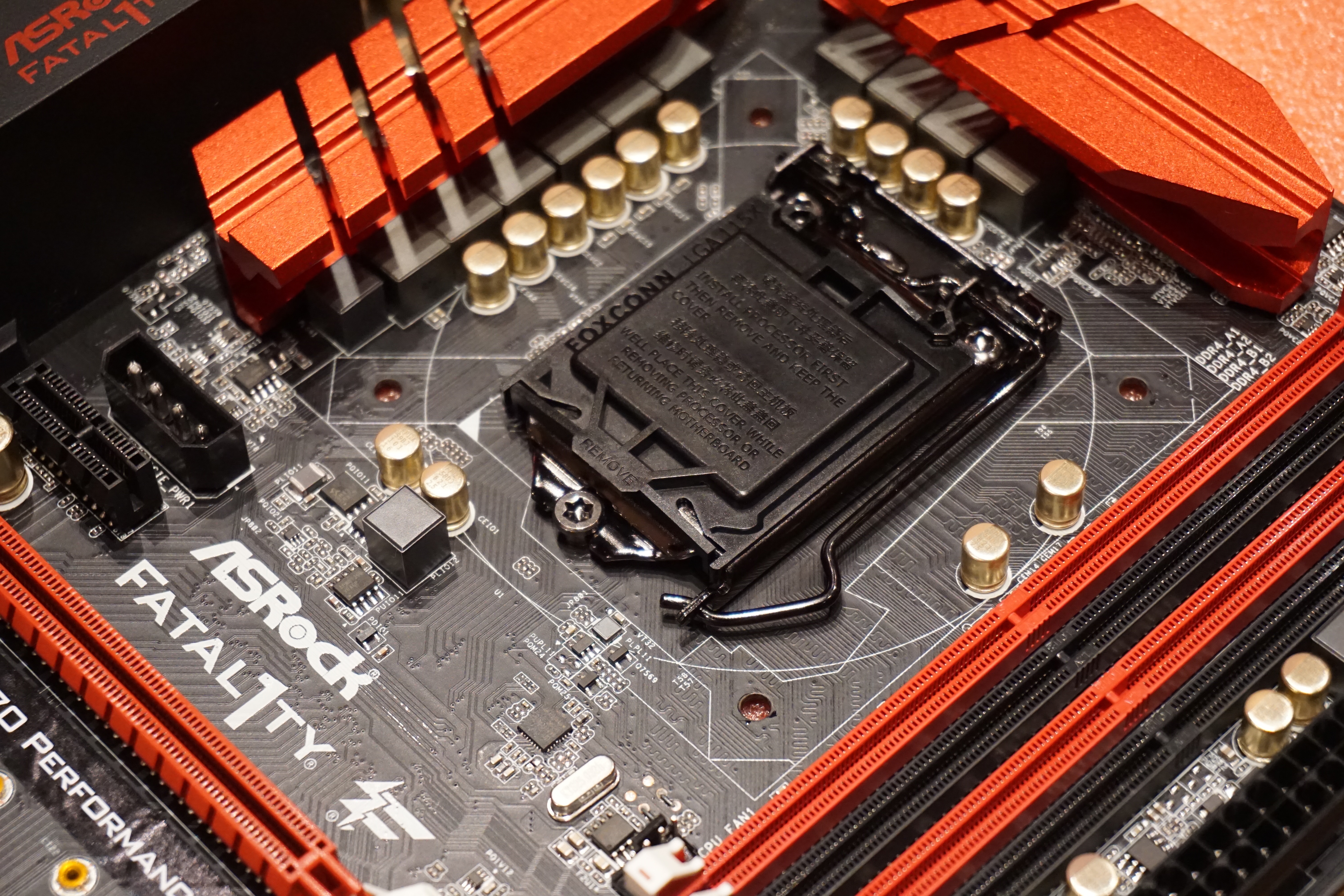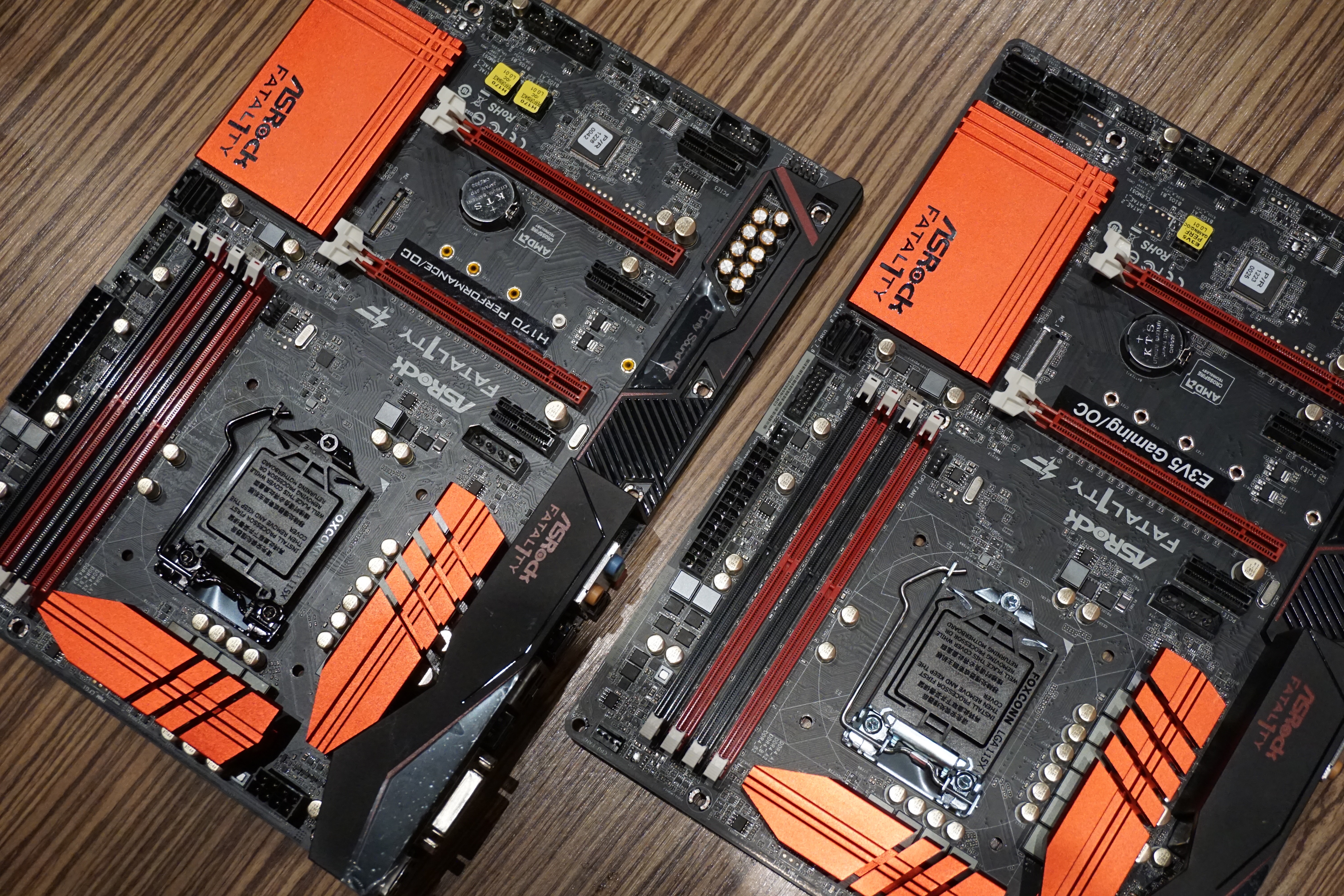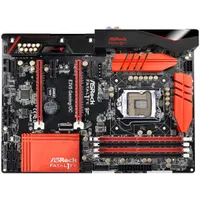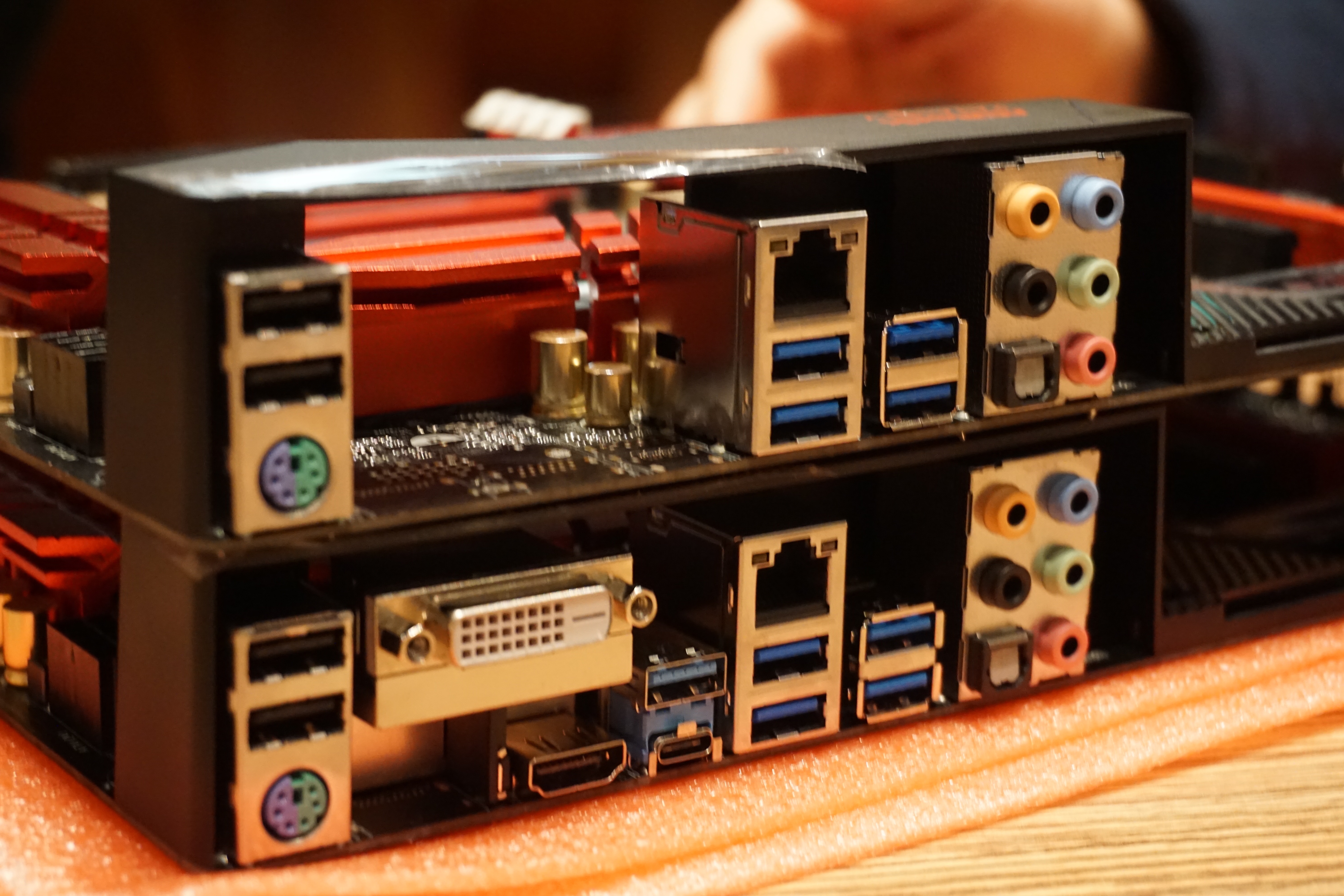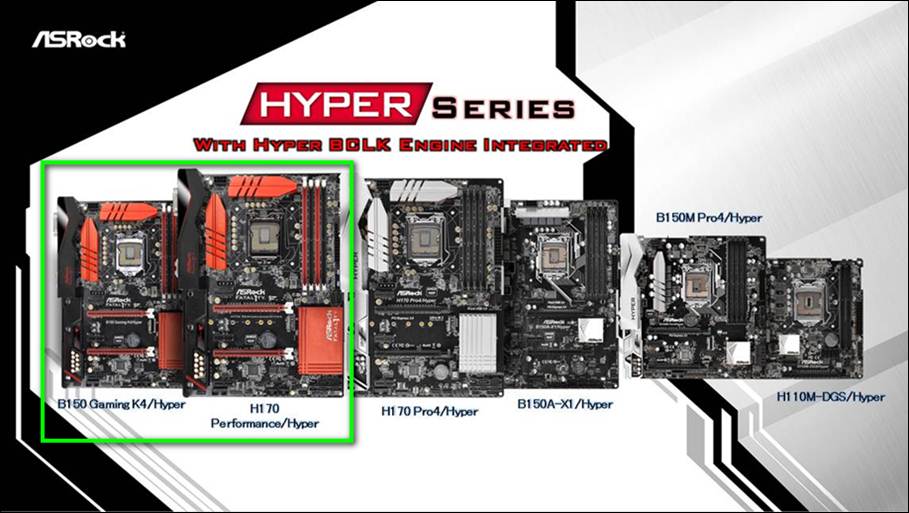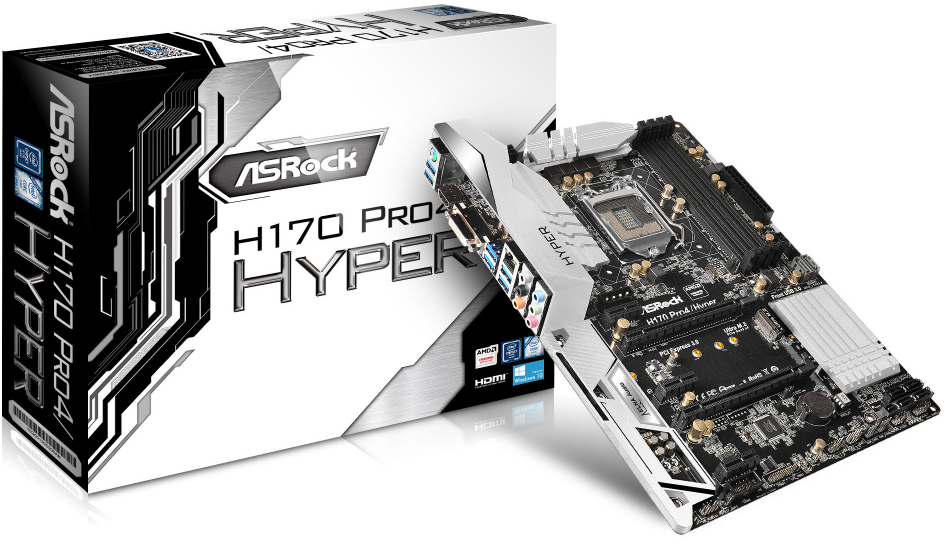Asrock Quietly Brings Back Non-Z170 Non-K CPU Overclocking Motherboards
After a conflict arose between Asrock and Intel, Asrock announced that its non-Z170 overclocking motherboards were cancelled. Not long after, a BIOS update removed the Sky OC feature for overclocking non-K CPUs from its motherboards. Things looked bleak for PC enthusiasts as the dream of overclocking multiplier-locked CPUs again faded, but non-Z170 overclocking motherboards were nevertheless developed, and Asrock has already released the first one onto the market as part of the Hyper series.
How Does It Work?
In order to enable overclocking on non-Z170 chipsets, you need an extra piece of hardware known as a clock generator. Essentially, every computer ever made has one of these devices. It helps the various components sync up with each other, and it is directly related to the system’s BCLK. On old systems it was a separate piece of silicon, but on modern computers, it’s integrated into the chipset.
The problem that prevented Intel’s last several generations of processors from being able to overclock (excluding unlocked SKUs) was that they incorporated an ever-increasing number of features into the CPU die itself. These components had difficulty operating above their stock clock speeds, and they would become unstable after even a minor increase in BCLK. Even if the CPU cores were able to handle the increase in clock speed, the entire system would crash.
By incorporating an additional clock generator, Asrock is able to force the CPU cores (that’s cores, not all components on the CPU die) to use a separate clock generator and BCLK than the rest of the system. This allows you to then overclock the CPU by increasing BCLK until the CPU cores themselves become unstable without destabilizing other components.
There are a few caveats, however, as in order to enable overclocking, Asrock had to disable a few other features. First, users should not make the mistake of thinking that these boards can overclock unlocked CPUs by raising the core multiplier. Overclocking is possible only by raising the BCLK.
At stock clock speeds, these motherboards perform and act just like any other, but once the BCLK is raised above 100 MHz in the BIOS, the system instantly disables power saving C-States and Turbo Boost. The system also won’t be able to use certain instructions properly. These issues are relatively minor, as overclockers often disable power saving C-States to help stabilize their system, and the clock speed increase should ultimately increase performance above what Turbo Boost was capable of.
The First Overclockable C232 Motherboard
If Asrock’s Fatal1ty E3V5 Performance Gaming/OC looks familiar, it is because we first discussed it back during CES. We were told that this motherboard had been cancelled, but it has already been released to various retailers. This board in particular is special, as it is the only motherboard on the market capable of overclocking Skylake LGA 1151 Xeon processors.
Get Tom's Hardware's best news and in-depth reviews, straight to your inbox.
The Fatal1ty E3V5 Performance Gaming/OC is similar to a Z170 enthusiast motherboard and shares many of the same features. It has a decent 10-phase power design, a relatively high-end Realtek ALC1150 audio codec with a relatively large number of capacitors to help improve clarity, and two PCI-E x16 slots.
Perhaps in an effort to avoid making the Fatal1ty E3V5 Performance Gaming/OC motherboard a too tempting alternative to its competing Z170 products, Asrock didn’t include an M.2 slot or a second BIOS chip.
It should also be noted that this board does not have any video output connections, as most Xeon CPUs do not feature an iGPU. Having a few video outputs might have been nice for other CPUs that do contain an iGPU, but as this is clearly an enthusiast-oriented product, it is unlikely that the iGPU would have seen much use anyways.
What about H170, H110 And B150?
None of the other motherboards that were cancelled are being released, but instead there are two new motherboards that are nearly identical to the old boards, as well as four entirely new designs.
First, the Asrock B150 Gaming K4/Hyper is essentially the same as the cancelled B150 Gaming K4/OC. These two boards use the same color design and heatsinks, and share many of the same specs, including a 10-phase power design, Killer E2400 Gigabit LAN and Realtek ALC1150 audio codec. All of the specs we had for the B150 Gaming K4/OC match the new board, actually, so it is likely that Asrock just changed the name to fit inside of its Hyper series of products.
The H170 Performance/Hyper is also essentially the same as the cancelled H170 Performance/OC board, and again, all of the specs we have match up perfectly other than the name. The H170 Performance/Hyper, B150 Gaming K4/OC and C232 Fatal1ty E3V5 Performance Gaming/OC are really quite similar to each other, as well. The biggest difference between these three boards, other than chipset-related features, is that the C232 supports Xeon processors, and the H170 motherboard has a single M.2 Key M slot in addition to being the only board in the Hyper series to sport a USB Type-C port.
The Four “New” Boards
We have specifications on just one of the four entirely new motherboards, but an image we acquired gave us a few key pieces of information. The most important detail we were able to glean from the picture -- other than model numbers, color scheme and chipset info -- is the form factor.
All of the motherboards discussed above are ATX, but one of them is micro-ATX, and another one is mini-ITX. Being able to overclock non-K processors is a key feature that will attract many enthusiasts to these boards, but some techies prefer one form factor over another and refuse to use anything else.
The only one of these four boards that we have specs for is the H170 Pro4/Hyper. If you look closely at the board, you will see it looks similar to the other motherboards discussed above but with a white color scheme. It also offers a 10-phase power design, and it has an M.2 Key M slot.
| Asrock Hyper Series Non-Z170 Non-K Overclocking Motherboards | |||||||
|---|---|---|---|---|---|---|---|
| Model | H110M-DGS / Hyper | B150M Pro4 / Hyper | B150A-X1 / Hyper | B150 Gaming K4 / Hyper | H170 Pro4 / Hyper | H170 Performance / Hyper | C232 Fatal1ty Performance Gaming / OC |
| Chipset | H110 | B150 | B150 | B150 | H170 | H170 | C232 |
| Form Factor | Mini-ITX | Micro-ATX | ATX | ATX | ATX | ATX | ATX |
| Memory Support | 2 DIMMs | 4 DIMMs | 4 DIMMs | 4 x DDR4 2133 MHz | 4 x DDR4 2133 MHz | 4 x DDR4 2133 MHz | 4 x DDR4 2133 MHz |
| M.2 Key M Slot | N/A | N/A | N/A | No | Yes | Yes | No |
| SATA | N/A | N/A | N/A | 6 x SATA-III (6 Gbps) | 6 x SATA-III (6 Gbps)1 x SATA Express (10 Gbps) | 6 x SATA-III (6 Gbps)1 x SATA Express (10 Gbps) | 6 x SATA-III (6 Gbps) |
| Audio Chipset | N/A | N/A | N/A | Realtek ALC1150 | Realtek ALC892 | Realtek ALC1150 | Realtek ALC1150 |
| LAN | N/A | N/A | N/A | Killer E2400 | Intel i219V | Intel i219V | Intel i219V |
| Color | White | White | White | Red | White | Red | Red |
| Price | N/A | N/A | N/A | N/A | N/A | N/A | $142.99 |
Overall, the H170 Pro4/Hyper is essentially a slightly lower-end, white-colored alternative to the H170 Performance/Hyper. The biggest drawbacks to this board compared to the H170 Performance/Hyper is that it doesn’t have a USB Type-C port, and it uses a lower-end Realtek ALC892 audio codec with considerably fewer capacitors.
Currently, the only one of these motherboards available on the market is the C232 Fatal1ty E3V5 Performance Gaming/OC, which retails for $142.99 on Newegg. We don’t have pricing or availability information for any of the others.
Follow Michael Justin Allen Sexton @EmperorSunLao. Follow us on Facebook, Google+, RSS, Twitter and YouTube.
-
heliomphalodon "It should also be noted that this board does not have any video output connections, as most Xeon CPUs do not feature an iGPU. Having a few video outputs might have been nice for other CPUs that do contain an iGPU, but as this is clearly an enthusiast-oriented product, it is unlikely that the iGPU would have seen much use anyways."Reply
IMHO the decision to forego video outputs is a mistake. There are of course Skylake Xeons that have on-chip graphics, and even in an enthusiast board the iGPU can be useful for diagnostics. Also (to use myself as an example) one might be building out a system incrementally, starting with the integrated graphics and only later (after saving one's pennies to purchase a top-of-the-line add-in card) implementing the final configuration. -
IInuyasha74 Yea I always liked having the iGPU available as a backup if my primary GPU starts having problems.Reply -
TechyInAZ Interesting. I would still be very wary of overclocking this way with my personal computer since it's brand new and there are most likely going to be unexpected issues with it.Reply -
logainofhades Wonder how long this will last? This on, then off, then on again, with the overclocking is getting old, and a bit confusing.Reply -
damric ASRock never really took away the SKY OC function. It was only ever available as beta BIOS to begin with, and customers certainly were never forced to update from that BIOS to an official BIOS that disables non-K OC. The clock generator is redundant, but allows non-K overclock with official BIOSes. The real gem for overclockers here is the new C232 board. Thank you ASRock!Reply -
logainofhades Asrock didn't really remove it. I guess you could say Intel did with their microcode update to kill that one bug skylake had.Reply -
Jameson Burt I always buy motherboards with two USB 3.0 headers (four USB 3.0 ports on computer's front).Reply
On a Z170 AsRock motherboard I bought last year, I couldn't install Linux,
finding that I needed to ignore the four AsMedia SATA ports,
and use only the six Intel SATA ports (for my boot, anyway).
Shocked, I stopped buying *170 motherboards with over six SATA ports.
I haven't seen those extra four mischievious SATA ports on Z170 Asus motherboards.
Because I don't use testing versions of Debian Linux,
etiher Z170 or H170 motherboards' Realtek ALC 1150 audio doesn't get used (without compiling my own alsa audio or going to Debian's testing distribution). To avoid future such problems and recompilations on future replacement motherboards, I purchased an already supported USB audio adapter.
Needless to say, in Linux, I must solve enough problems with new motherboards that I don't bother overclocking. I could probably get around these problems by using testing Debian Linux or Ubuntu Linux. "New" (motherboards) means latest, means drivers not necessarily incorporated in current Linux distributions.
-
mamasan2000 Intel blocking progress as always. I wonder why a whole system gets unstable if you play with BCLK. Maybe built like it on purpose? Bottomline boys, bottomline.Reply
Do what Intel says or you don't get to sell their junk. -
Redneck5439 It will be interesting to see what Intel decides to do about overclocking on the non "K" chips. Intel sells their i5 6600K and i7 6700K at a premium cost because you are able to overclock them. Who will buy a i5 6600K if you can buy the 6400 cheaper and overclock it to the same extent you can overclock the 6600K? I can foresee Intel either raising the price of the non "K" chips or in future non "K" chips using poorly binned silicon (just good enough for stability on stock clocks but not capable of being pushed more than 100Mhz at best), or possibly finding another way to "lock" their processors. If this starts to effect the sales of their more expensive "K" series you know they will respond somehow.Reply -
IInuyasha74 Reply17632646 said:It will be interesting to see what Intel decides to do about overclocking on the non "K" chips. Intel sells their i5 6600K and i7 6700K at a premium cost because you are able to overclock them. Who will buy a i5 6600K if you can buy the 6400 cheaper and overclock it to the same extent you can overclock the 6600K? I can foresee Intel either raising the price of the non "K" chips or in future non "K" chips using poorly binned silicon (just good enough for stability on stock clocks but not capable of being pushed more than 100Mhz at best), or possibly finding another way to "lock" their processors. If this starts to effect the sales of their more expensive "K" series you know they will respond somehow.
I'd say it is likely they will do something, but I don't think they will turn to using lower-quality silicon chips. That will lead to more RMAs, and if the overall silicon quality is too high, it will result in them pushing out too many CPUs as K processors, and not enough non-K chips, causing supply issues. I suppose they have that now, but once AMD's Zen gets here, no matter how it performs, they aren't going to want any type of supply issue that might give AMD an advantage.
